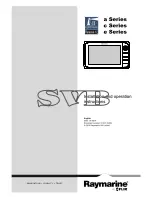
System
Operating
Manual
35
Consult the drug container labeling to confirm drug
compatibility, concentration, delivery rates, and
volumes are all suitable for intermittent or continuous
secondary or piggyback delivery mode.
Setting the primary rate greater than the secondary rate
will result in a more rapid infusion of any residual
secondary drug remaining in the line and the cassette.
Before disconnecting a syringe from the cassette, pull up
the plunger slightly to avoid spilling the fluid. For rigid
containers (e.g., vials), open the cassette door, remove
and invert the cassette (ports down). Close the upper
slide clamp of the set before removing the container (to
minimize spilling of fluid during replacement of the
container).
In vitro
studies have suggested that packed red blood
cells with unusually high hematocrit be diluted with
blood-compatible fluids, such as 0.9% Sodium Chloride
Injection, USP, to decrease hemolysis and increase flow
rate.
A small amount of fluid is expelled from the set (less than
0.1 mL) each time the door is opened or closed with a set
installed. If potent drugs are being used, take
appropriate action to guard against overmedication of
the patient.
Before opening the cassette door, close the clamp on the
secondary set or remove the secondary container from
the secondary port of that pumping unit to prevent
mixing of primary and secondary fluids.
Repeated opening and closing of the cassette door may
defeat the proximal AIR IN LINE alarm and may cause
an AIR IN LINE alarm, requiring cassette repriming.
Repeated opening and closing of the door may also cause
the drip chamber to fill.
















































